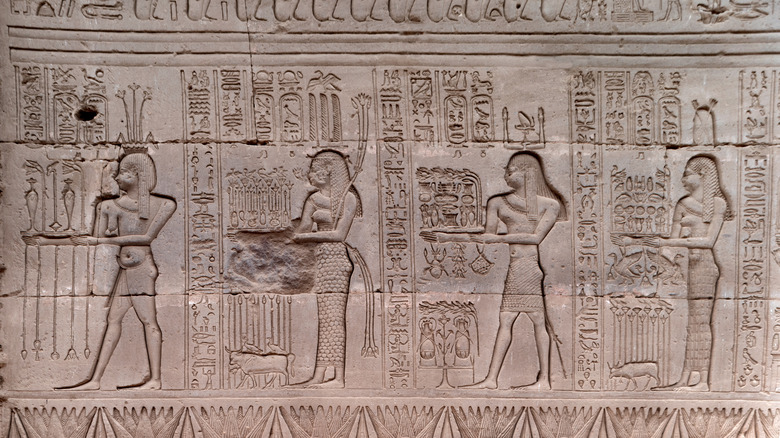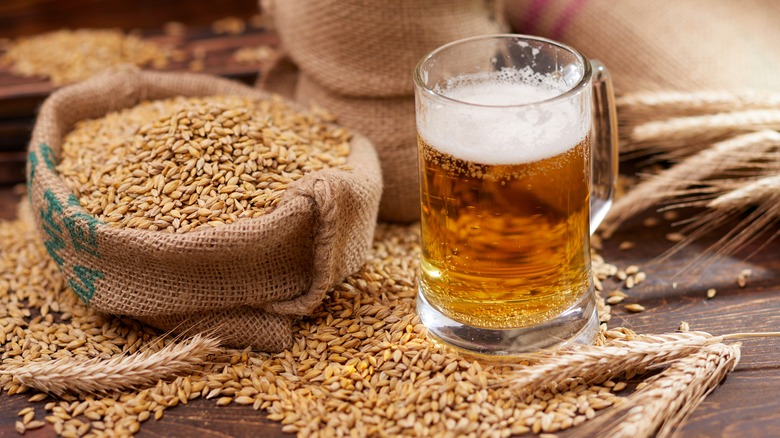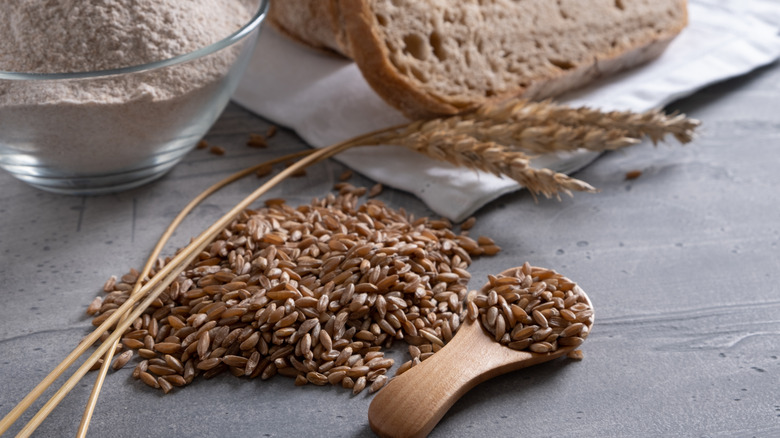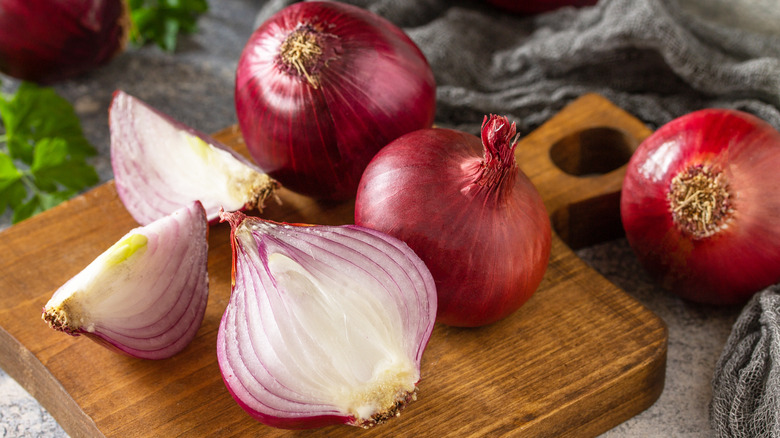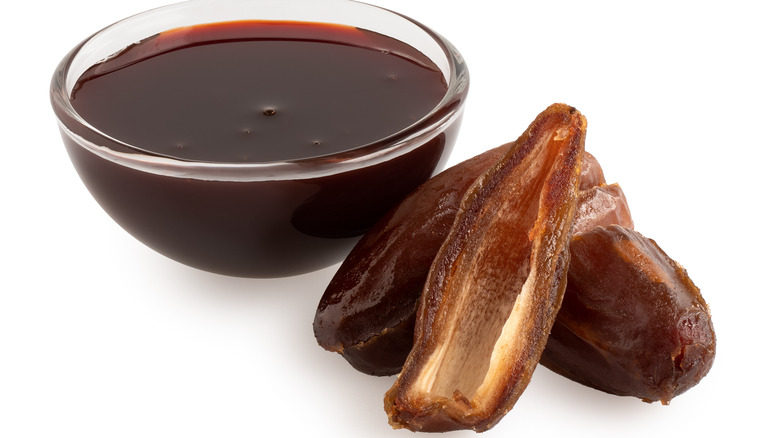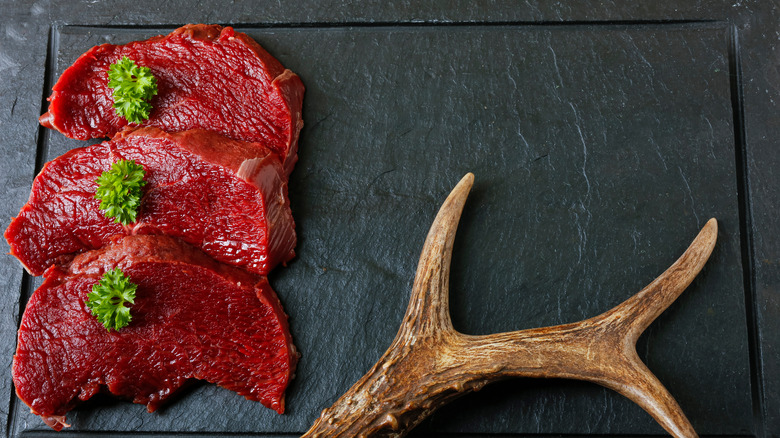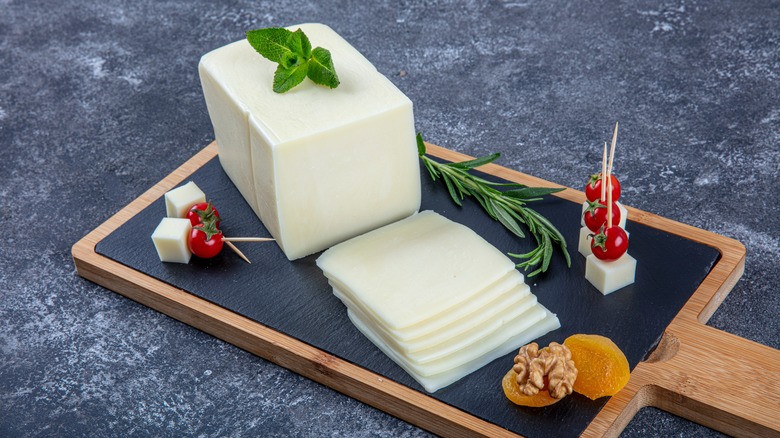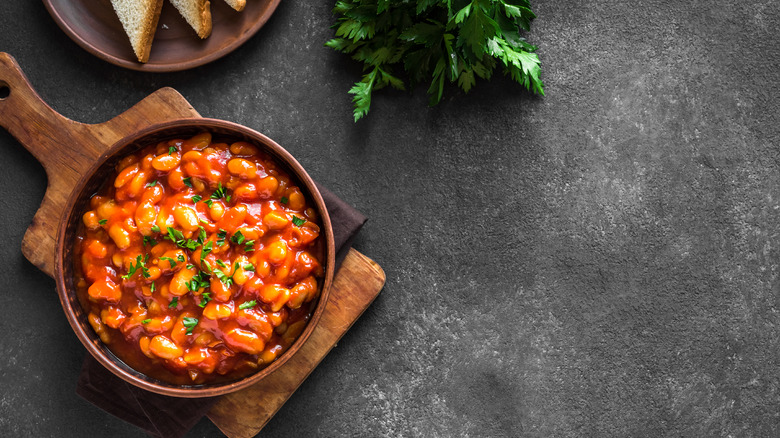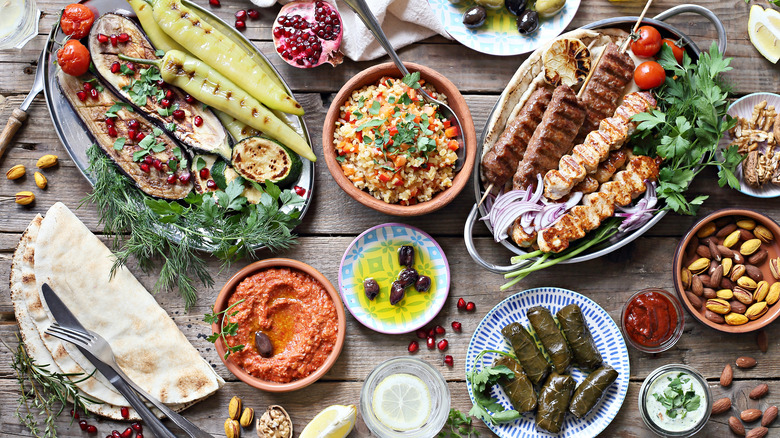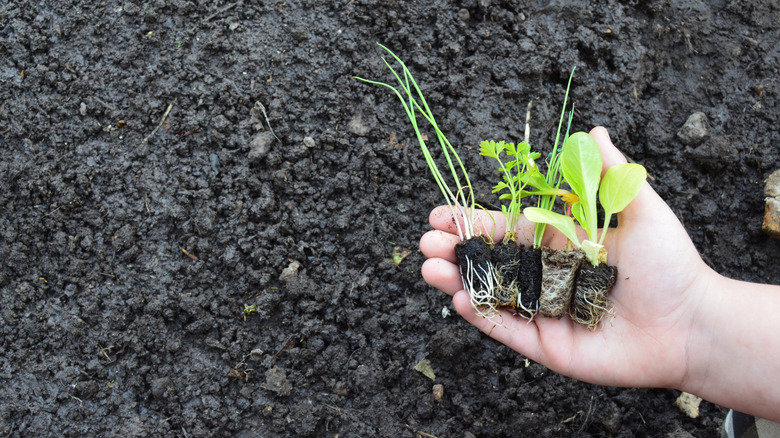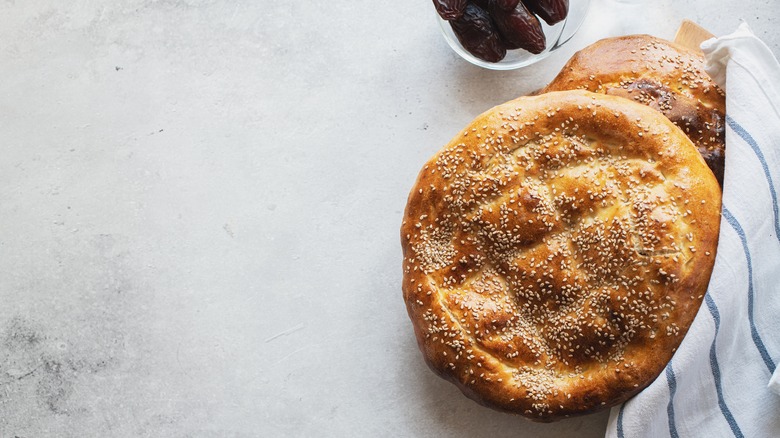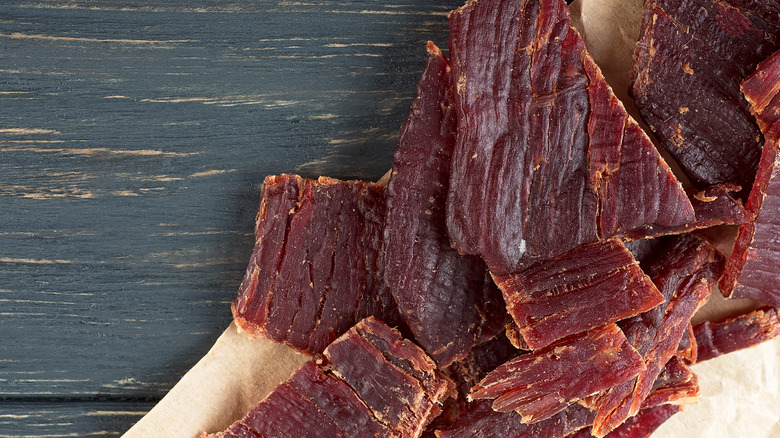What Did The Ancient Egyptians Really Eat?
The culture of ancient Egypt has captured the public imagination because of the intriguing and enduring record its people left behind. A rich tradition of visual arts and written language has provided historians with a colorful and detailed view of rituals and daily life in Egypt in ancient times, and the religious tradition of provisioning the dead with food and other amenities to enjoy in the afterlife (per the Penn Museum) has left a tangible physical record of ancient Egyptian life.
And providing food for the dead was a serious obligation. Per the Penn Museum, priests or family members would regularly leave food offerings in the publicly accessible outer chamber of the burial structure (after the spirit of the dead person was allowed to enjoy it, the priest on duty was allowed to eat it as a form of payment). All of this suggests that eating well was also a priority for the living, and detailed paintings of food preparation (per Atlas Obscura) reveal that ancient Egyptians had a rich culinary tradition. Here's some of what you might have enjoyed had you lived in the time of the pharaohs.
Ancient Egyptians drank beer with nearly every meal
In much of the ancient world, according to Wine Enthusiast, beer wasn't just a pleasant drink to enjoy with friends but a staple food, since fermentation enhances the nutritional value of grains by breaking down phytic acids, making nutrients easier to absorb. While ancient Egyptians may not have known about this process, they recognized enough about the benefits of beer to consider it an essential part of their diet, serving it with nearly every meal, according to History.com.
But if your idea of good beer is a cold, foamy pint of IPA, a helping of ancient Egyptian beer would almost certainly be a disappointment. Per History.com, it was standardly made from a preparation called "beer bread," a slow-baked cake of ground grains and yeast that was crumbled into water and allowed to ferment for about 48 hours. The resulting brew was thick and cloudy, and probably not the least bit foamy. But it was healthful and sustaining — and for ancient Egyptians, it was drinkable cereal rather than an optional refresher.
Farro was the most common grain and a good source of protein
If you think of farro as a trendy grain that only emerged in recent years to add extra nutrition and chew to salads and pilafs, think again. Farro has a long history — really long. Emmer — a form of farro — was the staple grain in ancient Egypt (per Riverside Corporate Wellness) and was used in a variety of preparations, from bread to porridge to beer. Indeed, it first emerged in Egypt around 10,000 years ago, spreading to surrounding areas and later embraced by the Romans as their empire spread.
It's easy to see how farro became a cornerstone of the ancient Egyptian diet: Not only did it grow easily in the fertile soil of the region, according to Riverside Corporate Wellness, it was a nutritional superfood, containing high levels of protein and fiber along with over 10 vitamins and minerals, including calcium, magnesium, and polyphenols, which are thought to offer protection against heart disease, diabetes, and cancer. With these life-giving properties, it seems only appropriate that it was often placed in royal tombs to sustain their occupants in the afterlife.
Onions were an inexpensive staple thought to have medicinal qualities
If you lived in ancient Egypt, you'd better have a taste for onions, because you'd encounter a lot of them. Per Michigan State University professor Ethan Watrall, onions — along with bread and beer — formed a virtual holy trinity in the ancient Egyptian diet. According to History.com, they grew wild in ancient Egypt, making them an easily accessible foodstuff for those of limited means.
But while onions were common and a staple of lower-class diets, they were seen as far more than food for the poor. According to New Mexico State University, they were an object of religious worship and were often embedded into mummified bodies, painted on tomb walls, or included as burial offerings. Ancient Egyptians had several reasons for revering the humble onion: To them, the onion's recursive layers symbolized eternity, its antiseptic properties were thought to further promote eternal life, and its strong smell when raw would surely be enough to revive the dead after their passage. For all these reasons, rich as well as poor Egyptians looked forward to onions with their meals.
Rich and poor diners in ancient Egypt used different sweeteners
Modern diners aren't the only ones who crave sweets. According to an article in Physiology and Behavior, a taste for sweets is innate in humans, although cultural or other factors can impact whether or not you're a serious sweet tooth. But ancient Egyptians, like most of us, enjoyed a hit of sweet with their meals, and had several ways to obtain it, depending on their resources.
For poor Egyptians, dates — which grow easily and abundantly in the region — were an easily obtainable source of sugar, per Michigan State University professor Ethan Watrall. According to the Online Museum, dates were not only enjoyed on their own, but made into candies. Other fruits, such as raisins, were also go-to choices for those craving something sweet, per Tour Egypt. The rich, however, also enjoyed honey (which was more labor-intensive and thus harder to access). They not only used it in sweets like honey cakes but in main dishes as well — tomb paintings reveal ancient Egypt's elites enjoying treats such as honey-roasted gazelle (per Big Event Travel).
Meats included everything from mutton to hedgehogs
While the ancient Egyptian diet was primarily plant-based (per Michigan State University professor Ethan Watrall) and almost fully vegetarian for working-class people, meat was still an important item on tables of the time. Wealthier people had access to domestic livestock and could enjoy meats such as beef and mutton, according to the Canadian Museum of History. They also enjoyed hunting, both as a recreational and social activity and as a means of procuring game for the table.
And when it came to hunted game, pretty much anything was ... game. Records show that ancient Egyptians enjoyed not only the usual suspects, such as rabbits and deer (per the Canadian Museum of History), but unexpected meat sources including hippos, cranes, and hedgehogs (per History.com). Fishing was also a popular way of obtaining animal protein among both the rich and poor, and the practice of salting and curing fish for long-term preservation was considered so important that only priests were allowed to conduct it, according to History.com.
Some cheese types made in ancient Egypt are still enjoyed today
Dairy products were not as big a part of the basic diet in ancient Egypt as they are in modern Western diets, but according to History.com, they were sometimes enjoyed by the wealthy. Per an article in the Alexandria Journal of Food Science and Technology, dedicated pots and straining equipment for the production of cheese and other fermented dairy products were found from periods as early as 3200 B.C.
Many of the cheeses known in ancient times are still being enjoyed by modern Egyptians. Karish, a popular soft cheese made from skim milk, was known to be consumed in ancient times, as was mish, a ripened spiced cheese (per the Alexandria Journal of Food Science and Technology). Egypt is also home to the oldest known sample of solid cheese: According to Wisconsin State Farmer, during a 2013-2014 archeological expedition, a large jar containing a desiccated block of white cheese was found in the tomb of Ptahmes, a mayor of the ancient Egyptian city of Memphis. The 3000-year-old cheese was made from a mixture of cow's milk and goat's or sheep's milk.
If you were a laborer in ancient Egypt, here's what a typical food day looked like
A rich assortment of both cultivated and foraged or hunted foodstuffs were available in ancient Egypt, but the working-class people who built the civilization's monuments only got to enjoy a limited range of them. If you were a laborer in ancient Egypt, you'd typically have only two meals a day (per History.com), and while simple, the food was hearty and filling.
Your morning meal would typically consist of bread, onions, and beer (yes, beer for breakfast!) and your evening meal would include yet more bread and beer, along with cooked vegetables and if you were lucky, meat. According to the History Museum of Canada, meat was expensive in ancient Egypt and thus a rare treat for the working classes. However, fish were plentiful and anyone with spare time and a net or fishing line could obtain them, so laborers in ancient Egypt often enjoyed fish in place of meat. One thing they didn't have to worry about, however, was deciding which flatware to use with which dish — ancient Egyptians ate their meals without utensils.
If you were rich, you had your choice of treats
In ancient Egypt as in the modern world, the rich had far more — and more luxurious — options than their working-class counterparts when it came to food. While bread and beer were dietary staples for the rich and poor in ancient Egypt (per History.com), wealthy people had access to costly treats rarely seen on working-class tables.
For instance, along with beer, wealthy diners in ancient Egypt enjoyed wine made from cultivated grapes (per the History Museum of Canada). Their diets were also more meat-heavy than those of their working-class compatriots: They not only enjoyed pork, mutton, and goat meat from domesticated livestock, but game meat such as venison or duck. And while ancient Egyptian nobles no doubt had plenty of servants to prepare their food and clean up after them, hunting was one food-related task they were happy to take on themselves. Hunting had not only recreational value, but religious and symbolic importance to ancient Egyptians, and nobles considered hunting to be a reflection of their power.
The fruits and veggies common in ancient Egypt are still popular today
According to the Food and Agriculture Organization (FAO) of the United Nations, ancient Egyptians were pioneering innovators in large-scale agriculture. They took advantage of the predictable seasonal flooding of the Nile River to plan and organize their crops, which included not only food such as barley, farro, vegetables, and orchard fruit, but critical industrial crops such as flax and papyrus. Indeed, they were such prolific farmers that they regularly produced more grain than the country could consume, so grain exportation became a dependable revenue source for the country, according to the History Museum of Canada.
Many of the fruits and vegetables grown and enjoyed in ancient Egypt will be familiar to fans of contemporary Middle Eastern cuisine. Per FAO, ancient Egyptians cultivated legumes like lentils, fava beans, and chickpeas; leafy greens such as lettuce and parsley; and root vegetables like onions and garlic. While the earliest recorded fruit harvests came from wild, native fruits such as date palms, as trade and contact with other regions increased over the years, ancient Egyptians adopted and successfully cultivated fruit from other regions, including apples and pomegranates.
Bread
Per Atlas Obscura, bread was a staple of the ancient Egyptian table – so much so that the language had at least 14 different hieroglyphs for bread. But the bread enjoyed by ancient Egyptians was a far cry from the fluffy sliced loaves most of us consider standard. Whole grain flours of emmer and barley, rather than modern wheat, were used, and the resulting loaves were typically coarse, per Reference.com.
According to Atlas Obscura, while no specific bread recipes from the time exist, detailed tomb paintings reveal intriguing information about how bread was made and what it may have looked and tasted like. Paintings reveal that some bread was baked outdoors in preheated ceramic bread molds, while others were shaped into spirals and baked vertically on what appear to be spits. The paintings also reveal details of the ingredients and their preparation: The spiral bread included grape juice, which was added to promote leavening, and was boiled before baking.
Jerky
Food preservation was a big deal for the ancient Egyptians — they not only mummified their dead (at least those from families who could afford it), but, per National Geographic, also the food the dead were to take with them to enjoy in the afterlife. Among the mummified foodstuffs discovered in the tomb of King Tut's great-grandparents Yuyu and Tuyu, for example, were a leg of veal, several geese, ducks, and pigeons, and a side of antelope.
Food preservation for the living was no less important. As historian Salima Ikram noted in the Encyclopedia of the History of Science, Technology, and Medicine in Non-Western Cultures, ancient Egyptians employed a variety of methods to preserve meat and fish for long-term storage and consumption, including drying, smoking, salting, and/or curing with honey, beer, or fat. One of the ancient preparations still enjoyed today, according to Grand Central Travel, is jerky: Ancient Egyptian cooks would sun-dry strips of meat and season it with a blend of coriander, cumin, and sesame seeds. And after thousands of years, Egyptians have not lost their taste for the treat — beef and chicken jerky continue to be popular and easy to find in modern Egypt.
